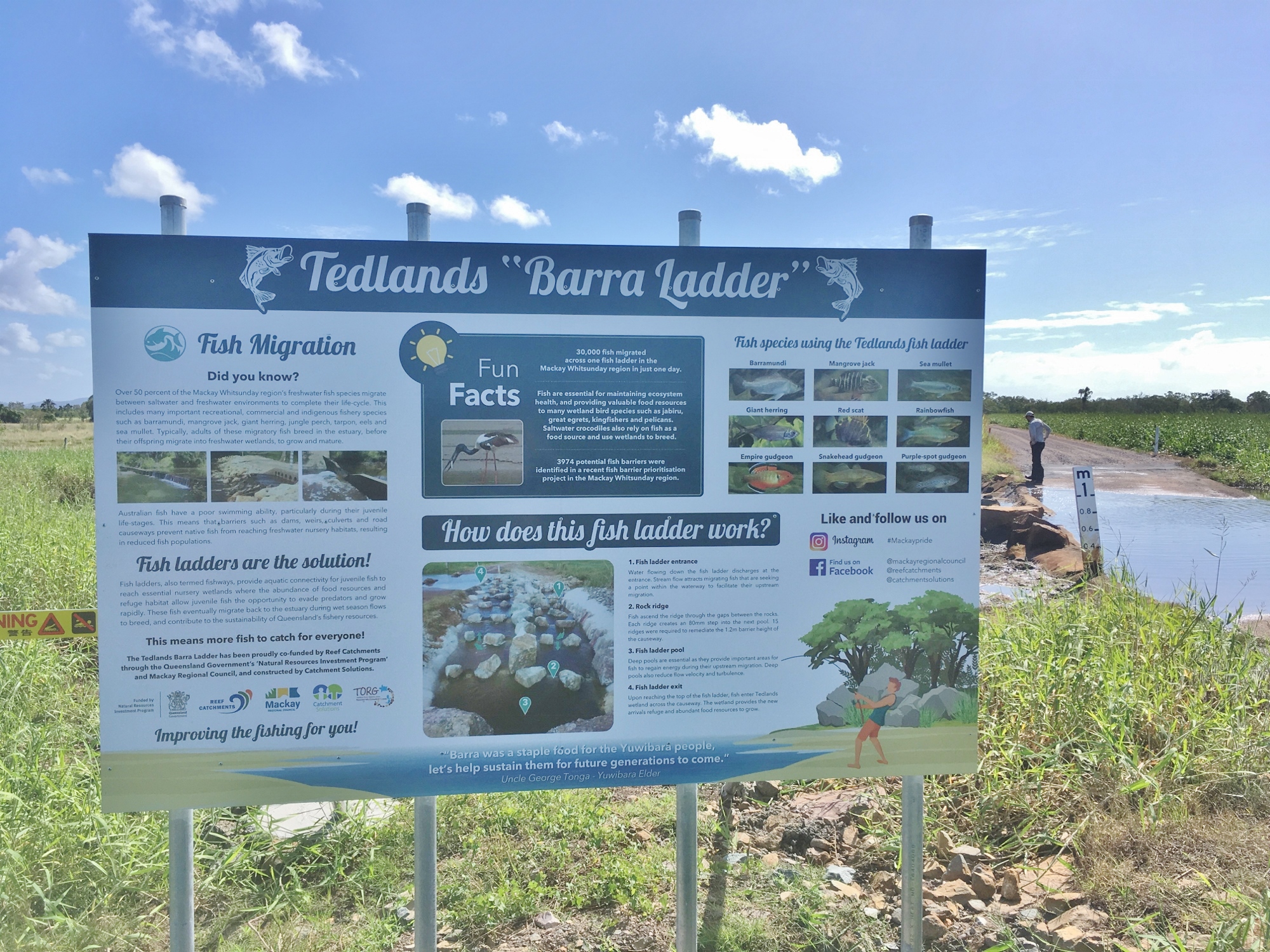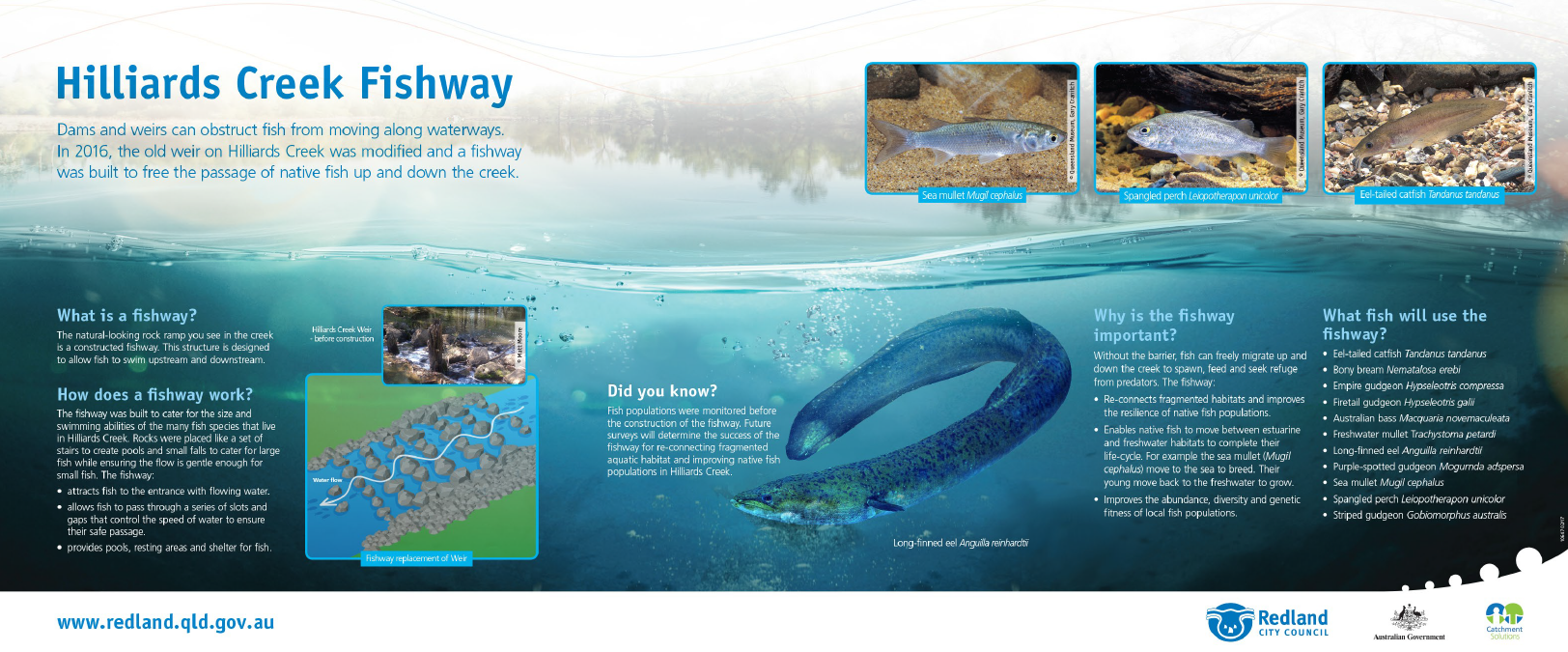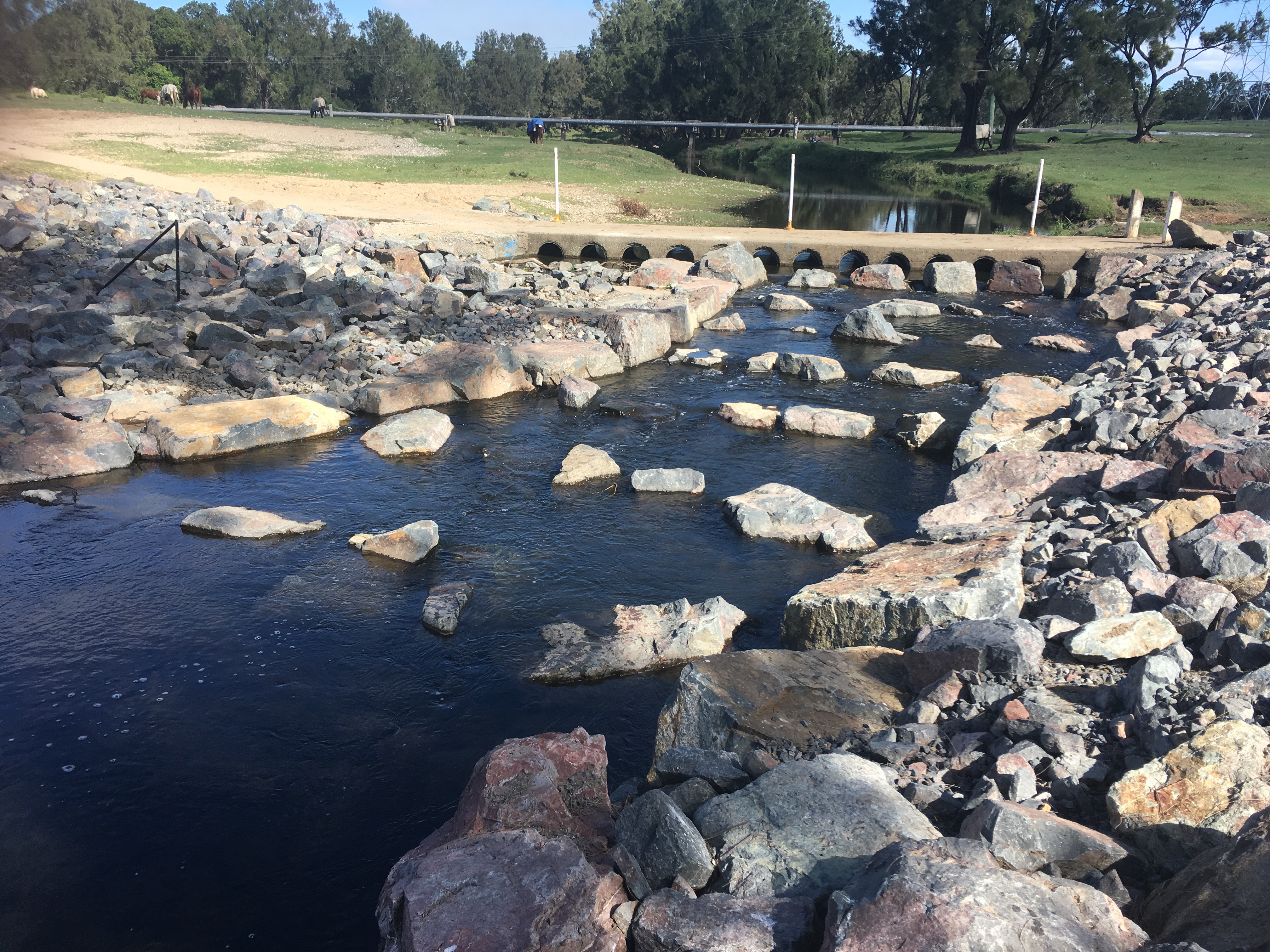|
|
Rock ramp fishwayRock ramp fishway – Key considerations Select from the tabs below
Requirements for effective passageA low gradient is essential for successful rock ramp fishways. It is also important to have high and low-flow slots between the ridge rocks[1]. Suitability and limitationsThe irregular placement of rocks in the fishway provides a range of alternative water velocities and depths to cater for differing behaviour of fish and other aquatic species negotiating the barrier. The larger and stronger swimming fish use the deeper, higher water velocity sections, and the smaller and weaker swimming fish use the shallower, lower water velocity sections[3][4]. Rock ramp fishways are generally considered effective for the whole fish community, particularly juvenile diadromous and small bodied species (see monitoring section)[2] This type of fishway has a reasonably high degree of redundancy (i.e. if partly blocked by debris, etc., will still function in rest of fishway), however, as with all fishways does require routine maintenance. A rock supply is required relatively close to site as this is a major cost consideration and a range of rock sizes are required including a well-graded rock mix to secure ridge and wall rocks. There are many rock ramp fishways across Queensland, mostly in the Burdekin, Fitzroy and Mackay-Whitsunday regions, but also the South East Queensland, Southern Gulf, Wet Tropics, Southern Queensland, Desert Channels, Cape York and Northern Gulf regions. Nearly all are constructed of rock (embedded by concrete), as opposed One limitation of rock ramp fishways on weirs and dams is that they normally do not allow for low headwater levels (i.e. levels below full supply of the storage).
Disclaimer: In addition to the standard disclaimer located at the bottom of the page, please note the Fishways (biopassage structures) disclaimer. References
Last updated: 10 May 2021 This page should be cited as: Department of Environment, Science and Innovation, Queensland (2021) Rock ramp fishway – Key considerations, WetlandInfo website, accessed 8 May 2025. Available at: https://wetlandinfo.des.qld.gov.au/wetlands/management/fish-passage/technologies/fishway-options/rock-ramp/key-considerations.html |

 — Department of the Environment, Tourism, Science and Innovation
— Department of the Environment, Tourism, Science and Innovation




